Welcome to the Guernsey Herbarium
This is the website of the digital collections of Guernsey's herbaria. Scroll to learn more about the herbarium collections and to search.

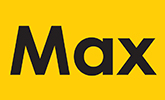
Guernsey's main herbarium is maintained by La Société Guernesiaise. The island has four herbaria overall, three of which (Gosselin, Working Herbarium and Dupuy) are owned by La Société Guernesiaise and are housed in their headquarters. Of these, the Gosselin Collection is considered the most important. The fourth (the La Lievre Collection) is owned by Guernsey Museum Services and is in their keeping.
In 2024, Max Communications digitised the Gosselin collection onsite and created this website to aid discovery. Search is powered by Max's proprietary metadata management software, Themis, which is used for transcribing the digitised collections and managing related taxonomies. The Gosselin and Working Herbarium collections can be searched below.
The Gosselin Collection
The Gosselin Collection was created by Joshua Gosselin (1739–1813), a member of one of the leading families on the island. Gosselin was ‘Greffier’ or Deputy Greffier—meaning Clerk of the Royal Court and Keeper of the Public Records, a Crown appointment—for over 30 years. He was Colonel of the 2nd Regiment of Channel Islands Militia and an officer for nearly forty years. In addition to these prestigious appointments, Gosselin was a keen antiquary, an accomplished watercolour painter and polymath.
Gosselin is also considered to be a pioneer in the study of Guernsey’s plant life. Despite being naturally modest and retiring, and preferring to work alone, Gosselin routinely corresponded with many of the leading naturalists and botanists of his day, including John Ellis, (1710-1776), Sir Joseph Banks (1743-1820), Sir James Edward Smith (1759-1828) and James Dickson (1738-1822).
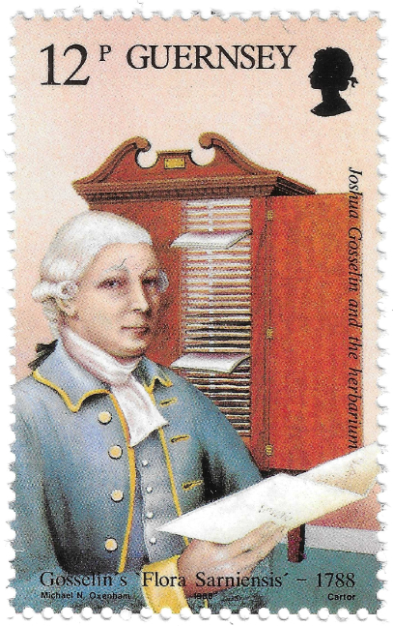
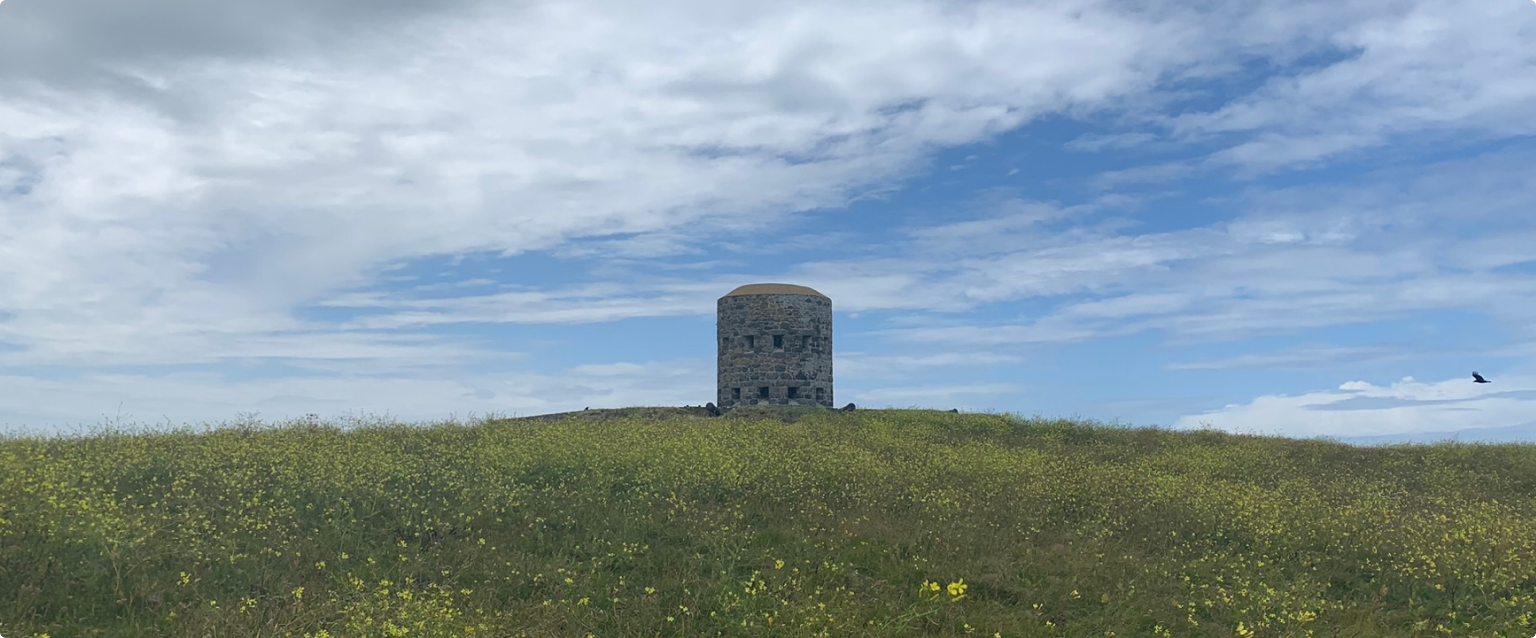

In the late 1960s, Honorary member of La Société Guernesiaise, Gosselin expert and author David McClintock, discovered Gosselin’s specimen collection and scrapbooks. All were in good condition, having been kept dry and free from insects. Some of these specimens were loose in folders and some were mounted. The finest sheets are the 124 specimens that were mounted by Gosselin himself. These are elegantly arranged with each leaf and flower expertly pressed and glued. It may be that Gosselin used the fish glue recommended by the revered Swedish naturalist Carl Linnaeus (1707-1778). Guernseywomen Mrs Mary Burridge, Mrs Patience Ryan and Mrs Jennie Page subsequently worked through the collection to place each specimen into flimsies and folders. These were arranged according to the specifications set out by J.E. Dandy (1903-1976) and they retain this arrangement today. The collection is now housed in a beautiful cabinet made by Mr Rollo Sherwill (one of Guernsey’s greatest cabinet makers) in 1976. One of Gosselin’s scrapbooks is also housed in the cabinet. The Gosselin collection can be searched here.
Working Herbarium Collection
This collection holds c.3,500 specimens collected by numerous persons from 1890 to present time, and includes examples of every plant known in Guernsey. Prior to 1986, La Société used to meet in their own room at the Guilles Alles Library. Thereafter, La Société was headquartered alongside Gurnsey Museum at Candie Gardens, where the Working Collection is now stored in a purpose-made cabinet produced by Terry Robilliard in 1992.
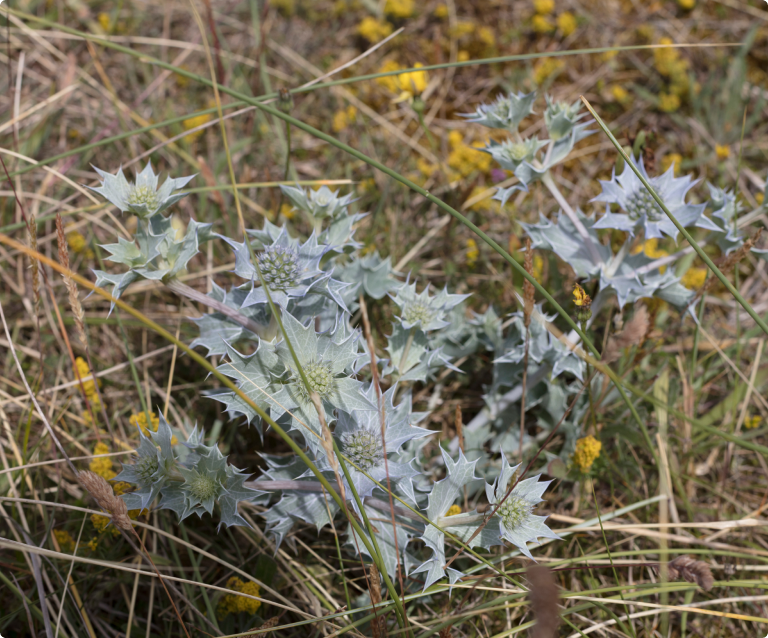
Sea Holly (Eryngium Maritimum) - Guernsey Island
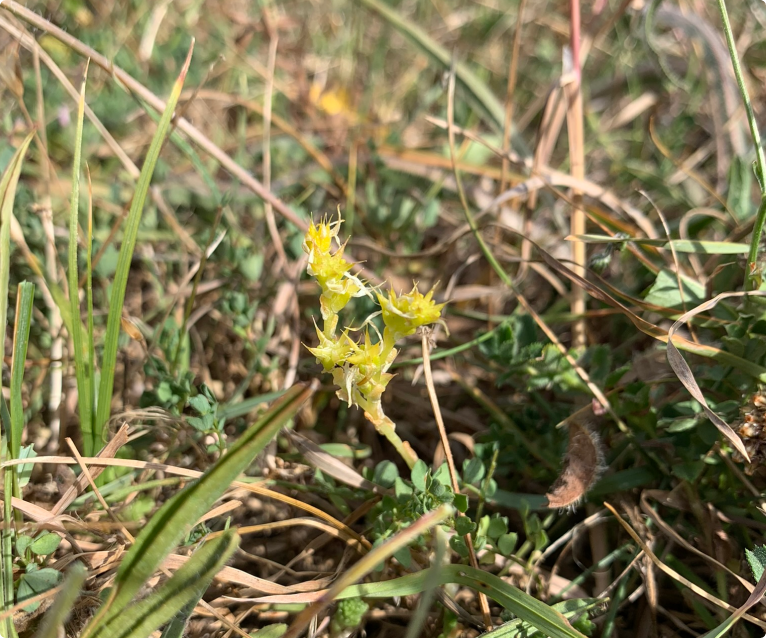
Small Hare’s Ear (Bupleurum baldense) - Guernsey Island
In 1984, the Working Herbarium Collection was numbered, arranged in Dandy order and condition-checked. Remounting and repairs (where necessary) were undertaken by botanists Jennie Page and Patience Ryan, with specimens placed in flimsies and folders, and renamed where appropriate.
They have remounted and repaired as necessary, many of the specimens, and have updated the names and put the specimens in flimsies and folders. Each specimen was numbered and the whole collection put in Dandy order in 1984.
In 1986 the collection was moved to the new Société headquarters and became 'the Working Herbarium'. In 1994, Rachel Rabey and a team of fellow botanists reorganised the herbarium in Kent order (which had by now superseded Dandy). A new container for the updated record cards was crafted by Peter Langmead. Reorganisation revealed gaps in the collection, so additional specimens were subsequently collected and accessioned into the Working Herbarium.
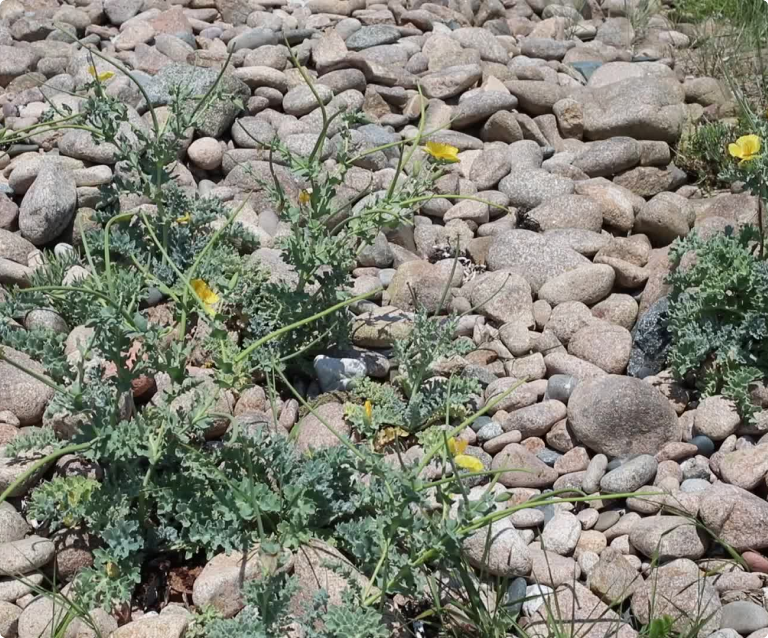
Yellow-horned Poppy (Glaucium flavum) - Guernsey Island

Pyramidal Orchid (Anacamptis pyramidalis) - Guernsey Island
In 2015, a further survey conducted by Rabey and then-student George Garnett revealed that many of Guernsey’s common plants were only represented by single (and largely historical) specimens, so a further 146 specimens were added. New species continue to be added as they arise.
The Working Herbarium collection can be searched here.
The Dupuy Collection
Mr. Edgar Dupuy (1840-1911) was a chemist, perfumer, photographer, and X-ray pioneer who ran a chemist’s shop and perfumery at Commercial Arcade for over forty years.
Between 1864 and 1865, Dupuy picked and pressed local flowers, preserving them in book form, which he named Hortus Siccus. The Hortus Siccus was most likely prepared as an entry for the Pharmaceutical Society’s annual Botanical Prize, although further research is required to verify this.

Dupuy's Hortus Siccus
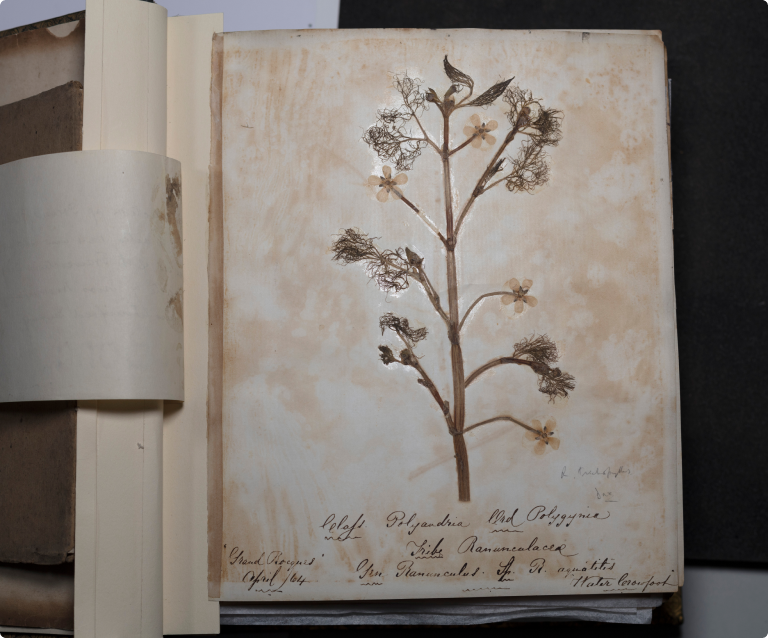
Common Water-crowfoot (Ranunculus aquaticus)
When he died in 1911, Hortus Siccus was passed to Dupuy’s daughter, Winifred. It was then passed onto La Société upon Winifred’s death in 1945.
Today, the 249 specimens of the Dupuy Collection—including several plants that are now extinct on Guernsey, such as Common Water-crowfoot (Ranunculus aquaticus)—are in excellent condition and are carefully stored in an archive box at La Société headquarters.
The Le Lievre Collection
This collection was created in the mid-1800s and contains some of the earliest of Guernsey’s written records. Unlike the above collections, Le Lievre is owned and kept by Guernsey Museum services, although a photograph record and index are held by La Société.

Candie Gardens
History of the Herbarium
Video Interview: The History of the Herbarium with Rachel Rabey and Helen Litchfield. (Camera Oliver Kolumban)
This evocative interview with Rachel Rabey and Helen Litchfield, members of the botany section of La Société Guernesiaise, was produced in 2024 by Max Communications during their digitisation of the Gosselin collection in 2024.
Credit: La Société Guernesiaise for Nature , History and Science Guernsey (Max Communications, 2024).

Common Water-Crowfoot (Ranunculus aquaticus)
Access to Guernsey Herbariums
Access to the Guernsey Herbariums can be granted by arrangement with La Société Guernesiaise.
To make an enquiry, please email [email protected].
Max Communications Ltd
Founded in 1998, Max Communications (Max) began as a specialist digitisation provider, with early clients including the V&A, Natural History Museum and Royal Geographical Society. Over the past 25 years, we have expanded into a multi-faceted operation with offices in London, Edinburgh, and Nevada, USA, serving the Culture, Heritage, and Life Science sectors.
We provide end-to-end archive services, including conservation, digitisation, metadata management, transcription, OCR, ASR, digital asset management, and digital preservation. Our expertise is trusted by prestigious institutions and blue-chip companies, with a strong emphasis on long-term client relationships.
In 2016, we were awarded the Royal Warrant for Digitisation and Archiving Services, which was proudly renewed in December 2024 under King Charles III.
We now work internationally with Life Science institutions, offering onsite digitisation, specialist equipment provision, and metadata harvesting.
For more information about Max, please contact [email protected].
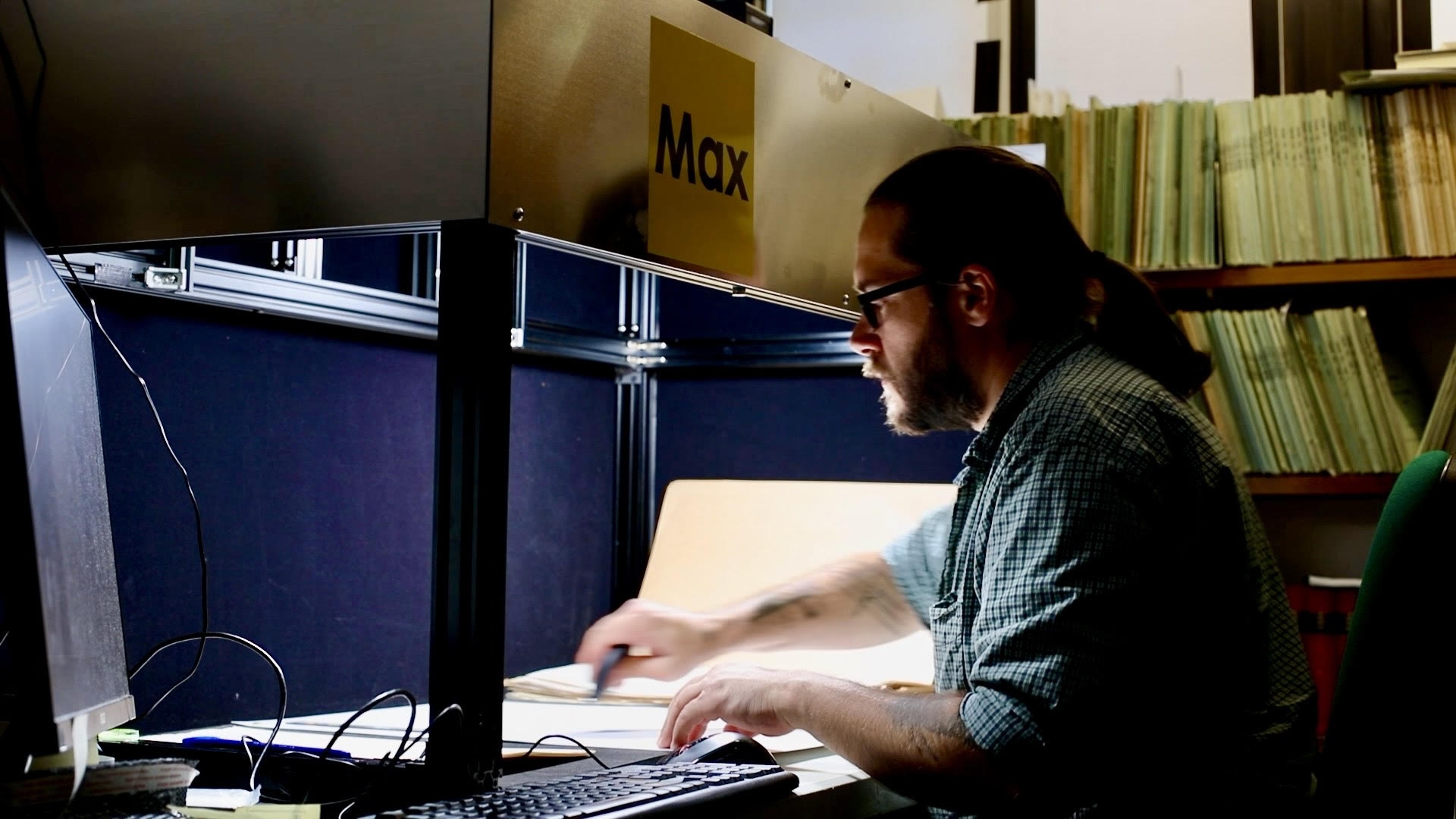
Digitisation on-site at Guernsey using a Max capture station
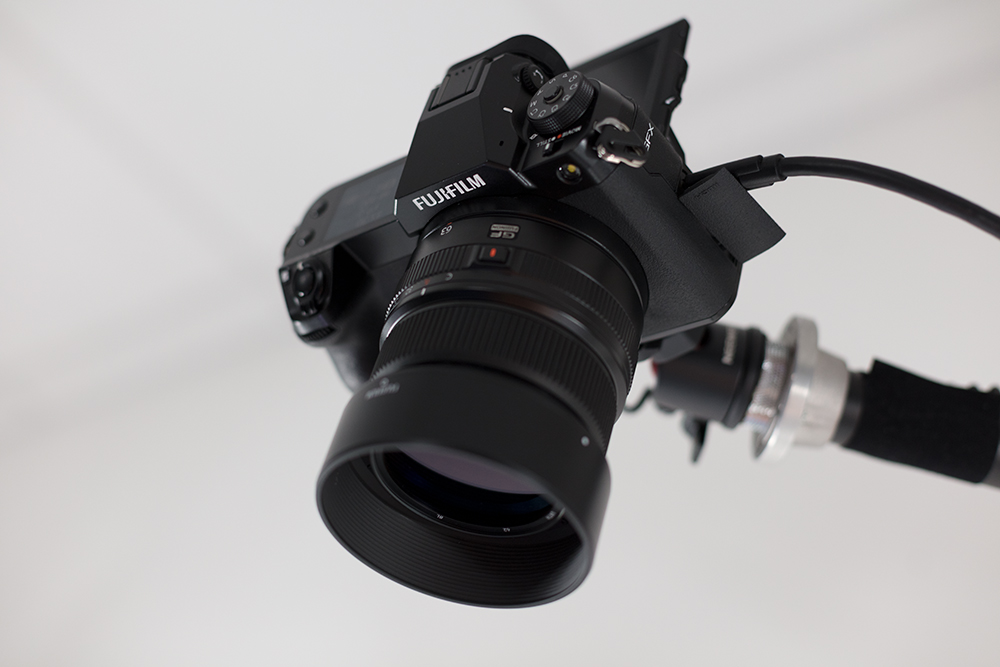
The Fujifilm GFX camera
Fujifilm
Max exclusively uses Fujifilm GFX cameras for all their Life Science projects, recognising Fujifilm as the industry’s best for precision and image quality. The Fujifilm GFX100 is the standard for all herbarium and Life Science digitisation work, delivering consistently high-resolution images at 700dpi. This choice ensures exceptional clarity, colour accuracy, and detail preservation, which are critical for scientific documentation and research. The GFX100’s advanced medium-format sensor and superior dynamic range make it ideal for capturing fragile and valuable specimens with minimal handling.
By leveraging Fujifilm’s cutting-edge technology, Max guarantees that digitised collections meet the highest archival and research standards. Our commitment to quality and innovation enables institutions to safeguard their collections, while providing researchers with the most accurate digital reproductions available.
For more information about Max, please contact [email protected].
